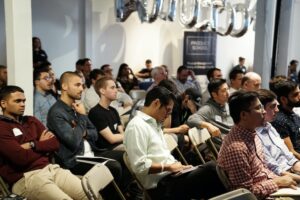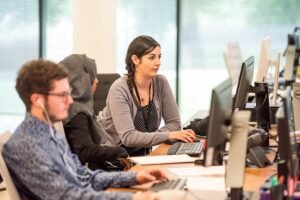
Learning is a fundamental aspect of human growth and development. Whether in an educational setting or throughout our lives, continuous learning helps us acquire new knowledge, develop skills, and adapt to a rapidly changing world. However, despite its importance, the learning process can sometimes be flawed or ineffective. In this article, we will explore 20 common reasons why learning may be broken and provide practical strategies to fix these issues.

1. Lack of Clear Goals and Objectives
One of the primary reasons learning can be ineffective is the absence of clear goals and objectives. Without a defined purpose, learners may lack motivation and direction. To address this, clearly establish the desired learning outcomes and communicate them to learners. Set specific, measurable goals that provide a sense of purpose and enable learners to track their progress.
2. Insufficient Relevance to Real-World Applications
Learning is most effective when it is relevant to real-world applications. If learners fail to see the practical value of what they are learning, their engagement and motivation may suffer. To address this, contextualize learning materials by connecting them to real-life scenarios and examples. Show learners how the knowledge and skills they acquire can be applied in their personal and professional lives.
3. Passive Learning Approaches
Traditional, passive learning approaches that rely heavily on lectures and textbooks can hinder effective learning. Passive learning often lacks engagement and active participation, leading to decreased retention and understanding. To fix this, incorporate active learning strategies such as group discussions, hands-on activities, and problem-solving tasks. Encourage learners to actively participate and apply what they have learned.
4. Overemphasis on Memorization
Memorization-focused learning approaches may prioritize short-term recall over deep understanding. Rote memorization can hinder critical thinking and problem-solving skills. To overcome this, promote a deeper understanding of concepts by encouraging learners to analyze, evaluate, and apply knowledge rather than solely memorizing facts. Use assessment methods that assess comprehension and application rather than mere memorization.
5. Lack of Personalization
One-size-fits-all learning approaches often fail to accommodate individual learner differences. Learners have unique backgrounds, abilities, and learning styles. To address this, implement personalized learning strategies that adapt to individual needs. Provide flexible learning paths, incorporate varied instructional materials, and offer opportunities for learners to pursue their interests and strengths.
6. Absence of Feedback and Assessment
Effective learning requires timely and constructive feedback. Without feedback, learners may be unaware of their progress and areas for improvement. Incorporate frequent formative assessments that provide feedback on performance. Encourage peer and self-assessment to foster metacognition and reflection. Provide clear and actionable feedback that helps learners understand their strengths and weaknesses.
7. Limited Opportunities for Collaboration
Learning is a social process, and collaboration enhances understanding and retention. However, traditional learning environments often lack opportunities for meaningful collaboration. Foster collaboration by incorporating group projects, discussions, and cooperative learning activities. Utilize technology tools that facilitate online collaboration, even in remote or hybrid learning settings.
8. Inadequate Use of Technology
Technology offers immense potential to enhance learning, yet its underutilization can hinder progress. Embrace technology as a powerful tool for learning. Utilize digital resources, multimedia materials, and online platforms that engage learners and facilitate interactive experiences. Leverage educational apps, simulations, and virtual reality to create immersive learning environments.
9. Lack of Emotional Engagement
Emotional engagement plays a vital role in learning. When learners are emotionally invested, their motivation and retention improve. Create a positive and inclusive learning environment that fosters emotional engagement. Incorporate storytelling, real-life examples, and personal connections to make learning meaningful and relatable to learners’ experiences.
10. Limited Opportunities for Reflection and Metacognition
Reflection and metacognition enable learners to become aware of their own thinking processes, strengths, and areas for improvement. However, many learning experiences fail to incorporate dedicated time for reflection. Integrate reflection activities into the learning process, such as journaling, self-assessment exercises, and group discussions that encourage learners to reflect on their learning journey.
11. Disconnection from Learners’ Prior Knowledge
Effective learning builds upon learners’ existing knowledge and experiences. Ignoring learners’ prior knowledge can result in disengagement and ineffective learning. Assess learners’ prior knowledge and provide opportunities to connect new information with their existing understanding. Use pre-assessments, concept maps, and activating prior knowledge exercises to bridge the gap between prior knowledge and new concepts.
12. Lack of Support and Guidance
Learning is a complex process that often requires support and guidance. Inadequate support can lead to frustration and demotivation. Provide learners with access to knowledgeable instructors or mentors who can provide guidance, answer questions, and offer support. Foster a supportive learning community where learners can collaborate and seek help from peers.
13. Limited Opportunities for Real-World Application
Learning should extend beyond the classroom and into real-world contexts. Without practical application, knowledge may remain abstract and disconnected from learners’ lives. Integrate real-world applications by incorporating internships, field experiences, project-based learning, and simulations that allow learners to apply their knowledge and skills in authentic settings.
14. Inflexible Learning Environments
Learning environments that lack flexibility can hinder individual learning needs. Fixed schedules, rigid curriculum structures, and limited choice can stifle engagement and autonomy. Create flexible learning environments that allow learners to personalize their learning journeys. Offer a range of learning pathways, elective courses, and opportunities for independent exploration.
15. Overwhelming Workload and Time Constraints
Excessive workload and time constraints can overwhelm learners and impede effective learning. Ensure that learning experiences are balanced and manageable. Consider the time required for learning activities and assignments, and provide clear guidelines and expectations. Promote time management skills and encourage learners to prioritize tasks effectively.
16. Lack of Authentic Assessment Methods
Assessment methods should align with the desired learning outcomes and provide an authentic representation of learners’ knowledge and skills. Overreliance on traditional exams and standardized tests may limit the assessment of higher-order thinking skills and real-world application. Incorporate diverse assessment methods such as projects, portfolios, presentations, and performances that allow learners to demonstrate their understanding and skills in meaningful ways.
Conclusion
Learning is a dynamic and multifaceted process that requires careful attention to various factors. By recognizing and addressing the common pitfalls and challenges in the learning journey, we can create more effective and engaging learning experiences. From setting clear goals and personalizing learning to promoting collaboration and embracing technology, implementing these strategies can help fix broken learning approaches and empower learners to thrive in their educational pursuits. Remember, learning is a lifelong endeavor, and it is never too late to enhance and improve the learning process.





